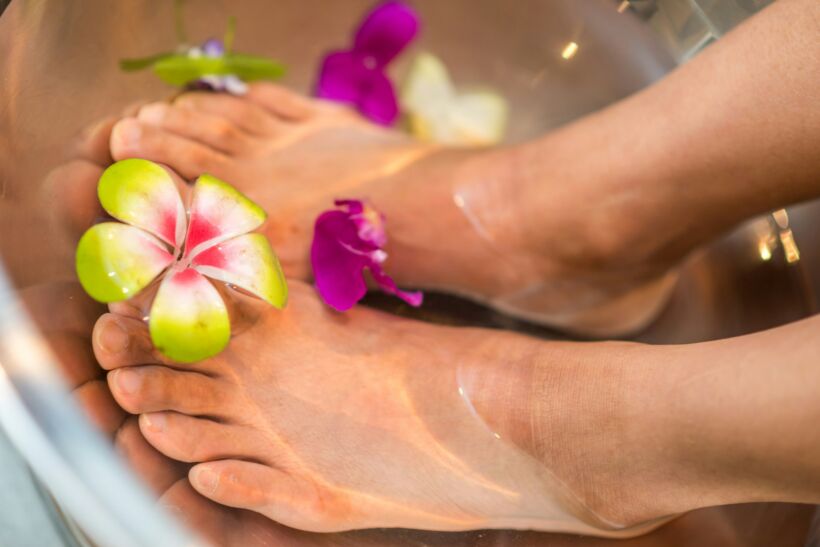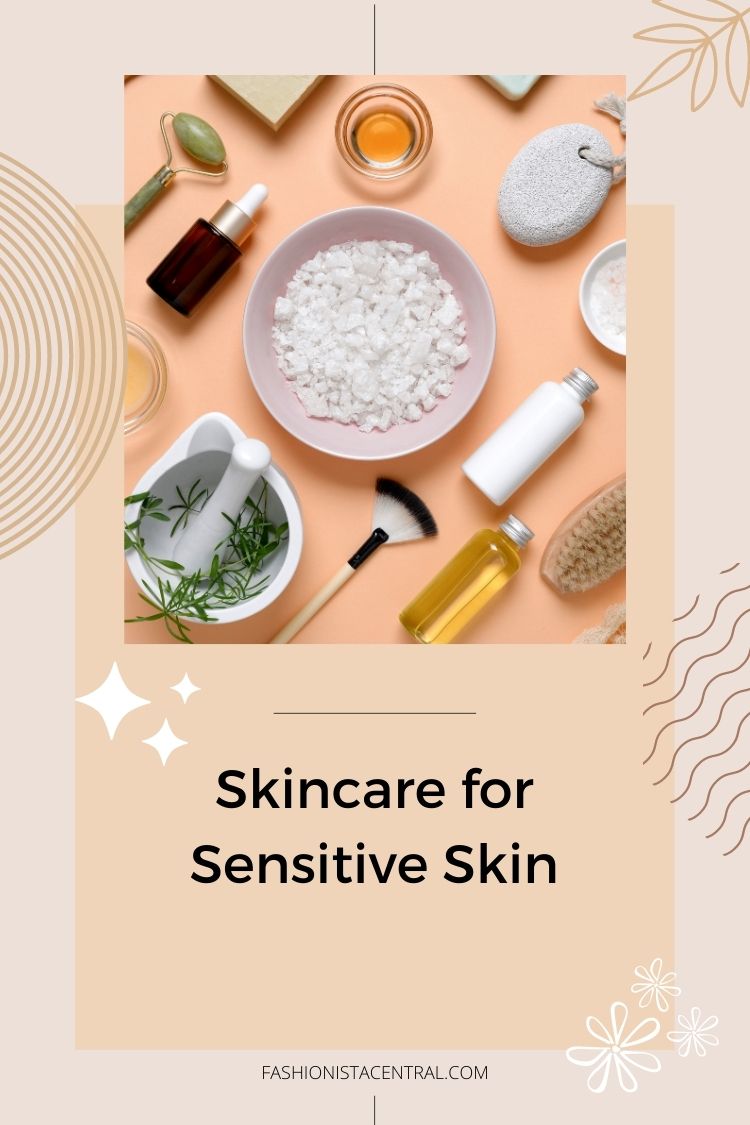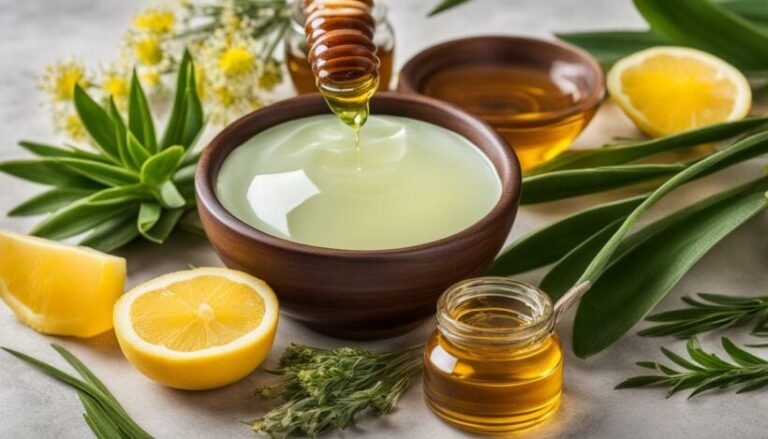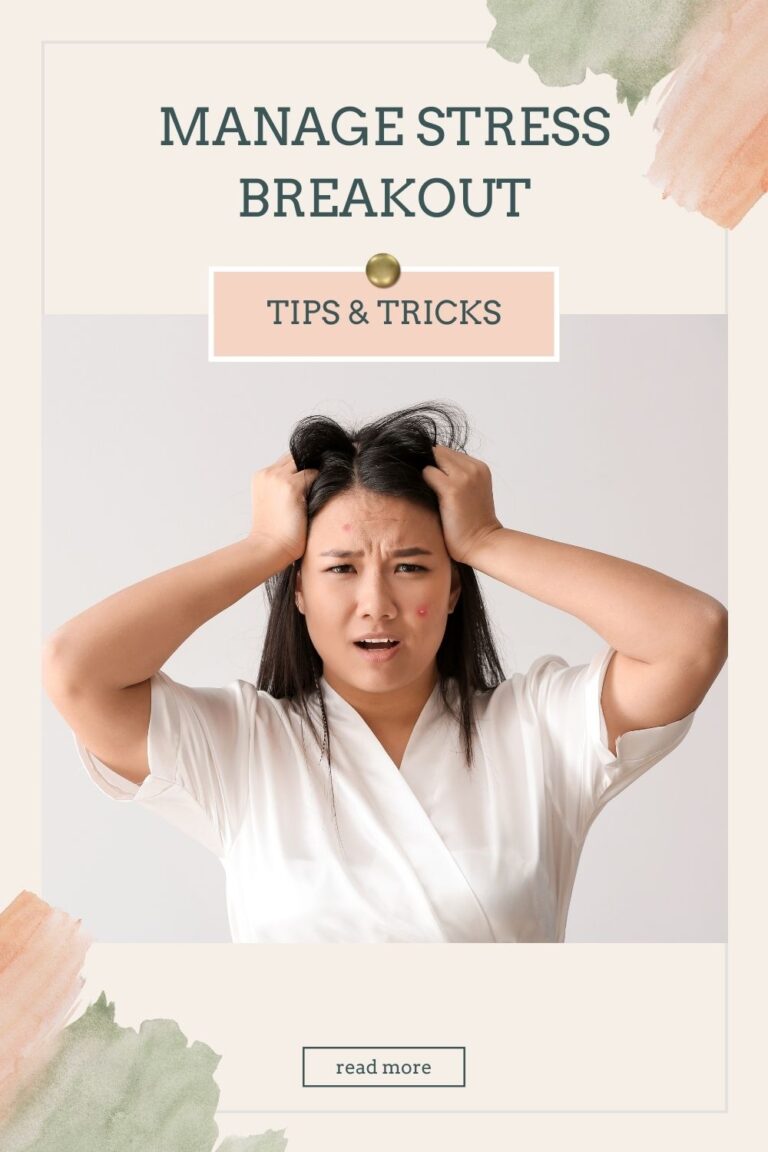Are you tired of dealing with painful ingrown toenails? Look no further! In this comprehensive guide, we will explore effective ways to treat and prevent ingrown toenails. Whether you’re struggling with existing ingrown toenails or want to avoid them altogether, we’ve got you covered.
Ingrown toenails can be a bothersome and uncomfortable condition, but with the right strategies, you can alleviate the pain and prevent further complications. Our expert advice will equip you with the knowledge and tools needed to combat this common issue.
From understanding the causes and symptoms of ingrown toenails to exploring both non-invasive and professional treatment options, our guide will provide you with a comprehensive overview of the available remedies. We’ll also delve into ingrown toenail prevention methods that you can easily incorporate into your daily routine.
So, if you’re ready to say goodbye to ingrown toenails and hello to healthy, pain-free feet, let’s dive in and discover the best ways to treat and prevent this nagging condition.
Understanding Ingrown Toenails
Before delving into the various treatments and prevention methods for ingrown toenails, it’s crucial to have a solid understanding of what they are and what causes them. Ingrown toenails occur when the toenail grows into the surrounding skin, causing discomfort, pain, and potential infection.
Symptoms of Ingrown Toenails:
- Tenderness and pain along the edges of the toenail
- Swelling and redness around the affected area
- Difficulty walking or wearing shoes
- Inflammation and pus discharge in severe cases
Causes of Ingrown Toenails:
- Improper nail trimming: Cutting the nails too short or at an angle
- Trauma or injury to the toenail
- Tight shoes or socks that put pressure on the toes
- Genetic predisposition
Proper toenail care is essential to prevent ingrown toenails and maintain overall nail health. Here are some toenail care tips:
- Trim your toenails straight across, avoiding rounding the corners.
- Use clean, sharp nail clippers or scissors specifically designed for toenails.
- Soak your feet in warm water to soften the nails before trimming.
- Avoid picking or tearing at the nails, as it can cause damage.
- Choose comfortable shoes with enough room for your toes to move freely.
- When wearing socks, opt for breathable materials that prevent excessive moisture buildup.
Understanding the symptoms and causes of ingrown toenails, along with adopting proper toenail care practices, can greatly reduce the chances of experiencing this common foot issue. By promoting healthy nail growth and taking preventive measures, you can keep your feet happy and pain-free.
Non-Invasive Treatment Options
If you’re dealing with mild to moderate ingrown toenails, there are effective non-invasive treatments you can try at home. These home remedies can provide relief and promote healing, allowing you to avoid more invasive procedures. Here are some options to consider:
1. Soaking the Affected Foot
Soaking your foot in warm water can help reduce inflammation and relieve pain caused by an ingrown toenail. Add a tablespoon of Epsom salt to a basin of warm water and soak your foot for 15-20 minutes. Repeat this process several times a day to help soften the skin around the nail and promote healing.
2. Using Over-the-Counter Medications
Over-the-counter medications, such as antibiotic ointments and topical creams, can help prevent infection and reduce discomfort associated with ingrown toenails. Apply the medication according to the package instructions and cover the affected area with a clean bandage if necessary.
3. Proper Trimming Techniques
One of the main causes of ingrown toenails is improper nail trimming. To prevent further irritation, trim your toenails straight across and avoid rounding the corners. Use a toenail clipper or nail scissors specifically designed for toenails. If you need assistance, consider visiting a podiatrist who can trim your nails properly and provide guidance on how to maintain healthy nails.
Tip: Avoid picking or digging at the ingrown toenail, as this can lead to infection and further complications.
Remember, these home remedies are most effective for mild cases of ingrown toenails. If your symptoms persist or worsen, it’s essential to seek professional medical advice for a proper diagnosis and treatment plan.
| Treatment Options | Effectiveness | Benefits |
|---|---|---|
| Soaking the affected foot | Effective in reducing inflammation and pain | Relieves discomfort and promotes healing |
| Using over-the-counter medications | Can help prevent infection and reduce discomfort | Easily accessible and convenient to use |
| Proper trimming techniques | Effective in preventing further irritation | Maintains nail health and reduces the risk of recurrence |
It’s important to note that these treatment options may not be suitable for everyone, and individual results may vary. If you’re unsure about the best course of action for your ingrown toenail, consult with a healthcare professional or a podiatrist who can provide personalized advice and guidance.
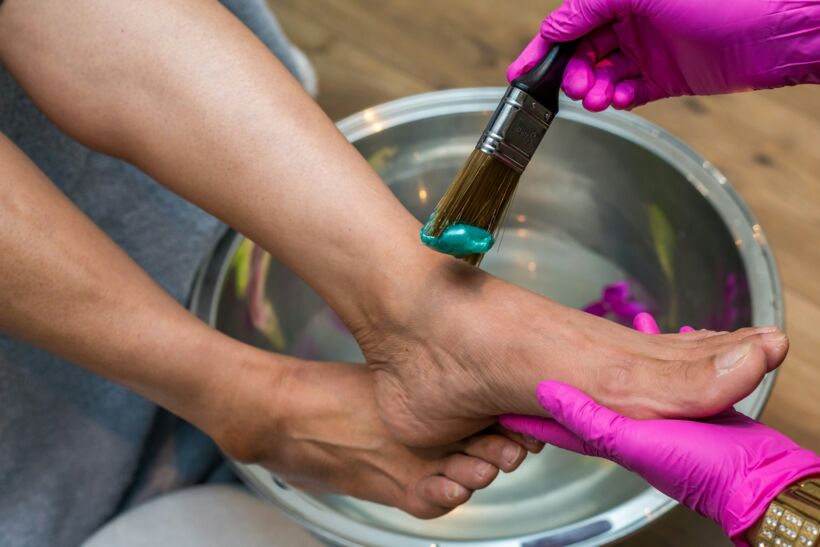
In the next section, we will explore professional treatment methods for severe or recurring ingrown toenails.
Professional Treatment Methods
When to Seek Professional Help
If you have severe or recurring ingrown toenails that are causing significant pain or infection, it’s time to seek professional treatment. A podiatrist, also known as a foot doctor, can provide specialized care and recommend the best treatment options for your condition.
Professional treatment methods for ingrown toenails often involve more advanced procedures that may be necessary to alleviate your symptoms and prevent further complications.
Treatment Options
When you visit a podiatrist, they will assess the severity of your ingrown toenail and recommend the most appropriate treatment method. Here are some common professional treatment options:
| Treatment Method | Description |
|---|---|
| Surgical Procedures | A podiatrist may perform a procedure to remove a portion or the entire ingrown toenail. This can involve a partial nail avulsion, where only the problematic section is removed, or a complete nail avulsion, where the entire nail is removed. Surgical procedures are typically done under local anesthesia to minimize any discomfort. |
| Laser Therapy | Laser therapy is a non-invasive treatment option that uses focused laser energy to target and eliminate the ingrown portion of the nail. It offers a precise and effective solution, often resulting in less pain and faster healing compared to traditional surgical methods. |
| Nail Avulsion | In some cases, a podiatrist may perform a nail avulsion, which involves permanently removing a portion or the entire nail. This procedure is typically recommended for chronic ingrown toenails or cases where other treatment methods have failed to provide long-term relief. |
Recovery and Follow-Up Care
After undergoing professional treatment for your ingrown toenail, it is important to follow your podiatrist’s post-procedure care instructions. This may include keeping the area clean and dry, wearing protective dressings or bandages, and taking any prescribed medications to prevent infection and promote healing.
Your podiatrist will also provide guidance on how to prevent future ingrown toenails, such as proper nail trimming techniques and footwear choices.
Remember, seeking professional treatment for severe or recurrent ingrown toenails can help alleviate your discomfort and prevent complications. It’s essential to consult with a qualified podiatrist who can provide personalized care and recommend the most effective treatment options for your specific situation.
Preventing Ingrown Toenails
Prevention is key when it comes to ingrown toenails. By following these practical tips and techniques, you can significantly reduce the chances of developing ingrown toenails and maintain healthy feet. Take a look at the methods below to learn how to prevent ingrown toenails:
- Proper Nail Trimming: Trim your nails straight across, avoiding rounded edges. Be careful not to cut them too short, as this can increase the risk of ingrown toenails.
- Wearing Appropriate Footwear: Choose shoes that fit properly and provide enough room for your toes to move freely. Opt for shoes with a wide toe box and avoid narrow, tight-fitting footwear that can put pressure on your toenails.
- Maintaining Good Foot Hygiene: Keep your feet clean and dry to prevent bacteria and fungal infections that can contribute to ingrown toenails. Regularly wash your feet with mild soap and warm water, and make sure to thoroughly dry them, paying attention to the areas between your toes.
Remember: Taking care of your feet and practicing good foot hygiene can go a long way in preventing ingrown toenails. It is also essential to pay attention to any signs of nail or skin abnormalities and seek medical attention if necessary.
Expert Tip:
“When trimming your nails, always use proper nail clippers and avoid using sharp or pointed objects. Trimming your nails straight across and keeping them at a moderate length can help prevent ingrown toenails.”
By incorporating these ingrown toenail prevention methods into your daily routine, you can promote healthy and happy feet.
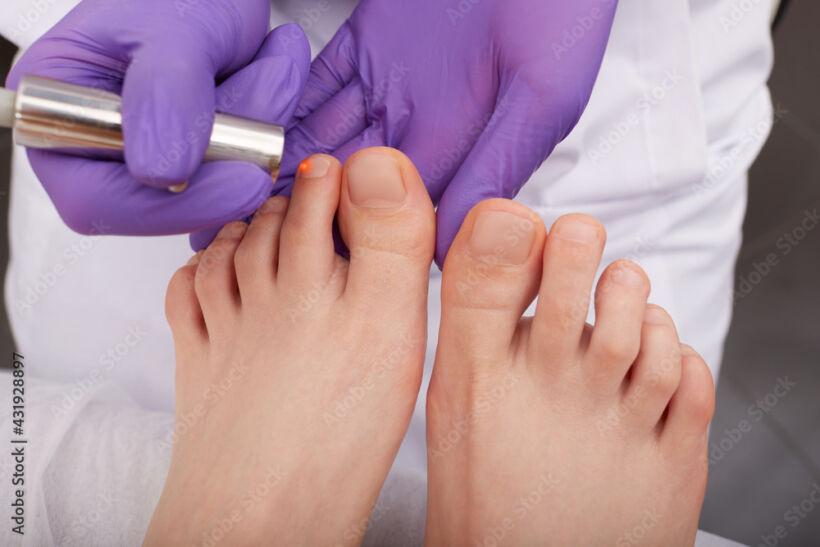
| Causes of Ingrown Toenails | Prevention Methods |
|---|---|
| Incorrect nail trimming | Trim nails straight across |
| Tight or ill-fitting shoes | Choose appropriate footwear with a wide toe box |
| Excessive sweating | Keep feet clean and dry, wear moisture-wicking socks |
| Injury or trauma to the toe | Avoid excessive pressure or impact on the toes |
Footwear and Socks for Ingrown Toenail Prevention
When it comes to preventing ingrown toenails, the right choice of footwear and socks plays a crucial role. By opting for designs that prioritize comfort and proper foot alignment, you can significantly reduce the likelihood of developing this painful condition.
So, what types of shoes should you be wearing to keep your toes happy and healthy? Look for shoes that provide ample toe space and a supportive arch. Avoid narrow or pointed-toe shoes that can squeeze and put pressure on your toenails. Opt for footwear with a roomy toe box and cushioning to minimize the impact on your toenails.
Additionally, consider wearing socks that offer breathability and moisture-wicking properties. Moisture can contribute to nail softening, making it easier for nails to become ingrown. Look for socks made of natural materials like cotton or bamboo that allow proper airflow and help keep your feet dry.
Choosing the right footwear and socks is key to ingrown toenail prevention. By prioritizing comfort, proper fit, and breathable materials, you can create an environment that promotes healthy nails and reduces the chances of ingrown toenails.
Footwear and Sock Recommendations
Here are some recommendations for footwear and socks that can aid in the prevention of ingrown toenails:
- Orthopedic shoes: These are designed with foot health in mind, offering ample toe space and support for proper foot alignment.
- Wide-width shoes: Opt for wide-width options that provide more room for your toes, preventing them from being cramped or squeezed.
- Shoes with adjustable closures: Look for shoes with straps, laces, or buckles that allow you to customize the fit and avoid excessive pressure on your toenails.
- Cushioned socks: Choose socks with extra padding in the toe area to provide a soft barrier between your toenails and the shoe, reducing the risk of irritation.
- Moisture-wicking socks: Select socks made of moisture-wicking materials, such as bamboo or polyester blends, to keep your feet dry and minimize the risk of nail softening.
Remember to prioritize your comfort and choose shoes and socks that fit well and promote proper foot health. By taking proactive measures to prevent ingrown toenails, you can enjoy happier and healthier feet.
Daily Foot Hygiene Practices
To prevent ingrown toenails, it’s essential to maintain good foot hygiene. By incorporating these daily foot care practices into your routine, you can keep your toenails healthy and minimize the risk of ingrown toenails.
1. Proper Washing
Start by washing your feet thoroughly with warm water and mild soap. Gently scrub your toenails to remove any dirt, bacteria, or debris that may lead to infections or ingrown toenails. Rinse your feet well and pat them dry with a clean towel.
2. Drying Your Feet
After washing, ensure your feet are completely dry, especially between your toes. Moisture can create an ideal environment for fungal infections and contribute to the development of ingrown toenails. Use a separate towel for your feet to avoid spreading any potential infections.
3. Moisturizing
Applying moisturizer to your feet can help prevent dryness and keep your skin healthy. Avoid moisturizing between your toes, as excess moisture in this area can promote fungal growth. Choose a moisturizer specifically formulated for feet and massage it into your skin, focusing on the heels and soles.
4. Inspecting Your Nails
Regularly inspecting your toenails is important for early detection of any issues that may lead to ingrown toenails. Look for signs of redness, swelling, pain, or tenderness around the nail edges. If you notice any abnormalities, take necessary precautions and consult a healthcare professional if needed.
Tip: Use a magnifying mirror to get a closer look at your toenails and ensure you don’t miss any potential problems.
By following these simple daily foot hygiene practices, you can significantly reduce the chances of developing ingrown toenails. However, if you do experience persistent pain, infection, or severe symptoms, it’s important to seek medical attention for proper evaluation and treatment.
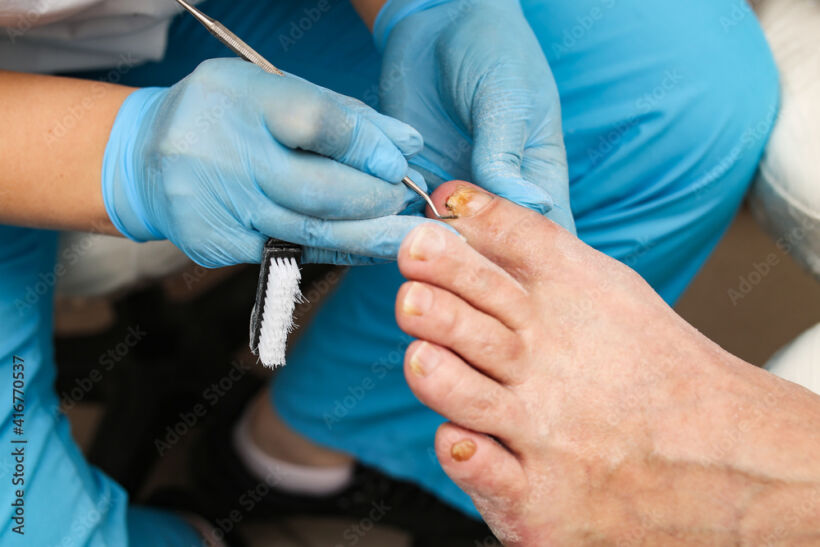
Continue reading to learn about when to seek medical attention for ingrown toenails and additional prevention methods to keep your feet healthy and free from complications.
When to Seek Medical Attention
While many cases of ingrown toenails can be treated at home, it’s important to know when it’s time to seek medical attention. Ignoring severe or recurring symptoms can lead to complications and further discomfort. Here are some signs that indicate you should consult a healthcare professional:
- Severe Pain: If you experience intense pain and inflammation in your toe due to an ingrown toenail, it’s advisable to seek medical help. A healthcare professional can assess the situation and provide appropriate treatment to alleviate your discomfort.
- Infection: If you notice signs of infection, such as increased pain, redness, swelling, warmth, or drainage of pus from your toe, it’s crucial to see a healthcare professional. Infections in the affected area require prompt medical attention to prevent the spread of infection and potential complications.
- Recurring Ingrown Toenails: If you frequently experience ingrown toenails despite proper self-care and prevention efforts, it’s recommended to consult a healthcare professional. They can identify the underlying cause and recommend suitable treatment options to address the recurring issue.
- Underlying Medical Conditions: If you have diabetes, poor circulation, or any other underlying medical conditions, it’s important to seek medical attention for ingrown toenails. These conditions can increase the risk of complications and require specialized care.
Remember, seeking timely medical attention can help prevent further complications and promote a quicker recovery. If you’re unsure about whether or not to see a healthcare professional, it’s best to err on the side of caution and schedule a consultation.
Now that you understand when to seek medical attention, let’s explore some essential tips on how to prevent potential complications caused by ingrown toenails.
Conclusion
In conclusion, understanding effective ways to treat and prevent ingrown toenails is crucial for maintaining healthy toenails and preventing a recurrence of this condition. By following the treatments and prevention methods discussed in this guide, you can take control of your toenail health and minimize the discomfort caused by ingrown toenails.
When it comes to treatment, non-invasive options such as home remedies and over-the-counter medications can often provide relief for mild to moderate cases of ingrown toenails. However, for severe or recurring ingrown toenails, professional treatment by a podiatrist may be necessary, which can include surgical procedures or laser therapy.
Prevention is equally important in maintaining healthy nails and avoiding ingrown toenails. This includes practicing proper foot hygiene, such as washing and drying your feet thoroughly, moisturizing your nails, and inspecting them regularly. Additionally, wearing well-fitting shoes and socks that allow for proper airflow can help prevent ingrown toenails.
By incorporating these treatments and prevention methods into your daily routine, you can effectively treat existing ingrown toenails and significantly reduce the chances of developing new ones. Remember, taking care of your toenails is essential for optimal foot health and overall well-being.

